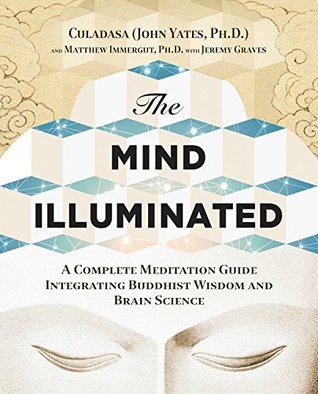More on this book
Community
Kindle Notes & Highlights
Read between
December 11, 2015 - April 16, 2017
Interrupted Attention and Overcoming Mind-Wandering
Practice Goals for Stage Two
work smart, not hard,
You will learn to work smart, not hard, using finesse, patience, and positive reinforcement rather than willpower.
you’re just becoming aware of what’s always been going on in the mind.
There are two primary goals for Stage Two:
shortening the periods of mind-wandering, and sustaining attention on the breath for longer periods.
mind-wandering with positive re...
This highlight has been truncated due to consecutive passage length restrictions.
achieve longer intervals of sustained attention by learning to actively engage with the breath.
The obstacles at this Stage are forgetting, mind-wandering, monkey-mind, and impatience.
Forgetting
Mind-Wandering
forgetting
mind-wandering
Stage...
This highlight has been truncated due to consecutive passage length restrictions.
Forgetting means we forget the meditation object, as well as our intention ...
This highlight has been truncated due to consecutive passage length restrictions.
Mind-wandering is what happens after we’ve forgotten what we were doing: the mind will wander from thought to thought...
This highlight has been truncated due to consecutive passage length restrictions.
“wak...
This highlight has been truncated due to consecutive passage length restrictions.
to what is ha...
This highlight has been truncated due to consecutive passage length restrictions.
distractions
Alternating attention
Interest and importance are judged according to the perceived ability to increase pleasure or decrease pain, cause happiness or unhappiness, or improve or threaten your physical well-being. When something captures attention, the breath is abandoned and forgetting happens.
This kind of mind-wandering is the main obstacle you’ll work on at this Stage.
spontaneously moving attention
forgetting and mind-wandering
By cultivating stable attention, meditation calms the wandering mind and creates inner peace. When attention is accompanied by greater awareness, we have strong mindfulness, meaning we can refocus and stabilize our attention wherever and whenever it’s needed. Awakening from Mind-Wandering
“wake up”
unconscious
consciously
During meditation, however, if you return to the breath as soon as you realize you’ve lost it, you’ll miss a key opportunity for training the mind.
introspective awareness
Train your mind through positive feedback. Savor the sense of being more fully conscious and present than when you were lost in mind-wandering.
consciousness
unconsciously?
“waki...
This highlight has been truncated due to consecutive passage length restrictions.
Savor the sense of being more fully conscious and present. Cherish your epiphany and encourage yo...
This highlight has been truncated due to consecutive passage length restrictions.
Conscious intention and affirmation powerfully influence our un...
This highlight has been truncated due to consecutive passage length restrictions.
By valuing this moment, you’re training the mind through positive reinforcement to wake you up...
This highlight has been truncated due to consecutive passage length restrictions.
unconscious
If negative emotions do arise, simply notice them and let them come, let them be, and let them go
Consistent, immediate positive reinforcement is far more effective than self-punishment.
As you keep repeating this technique, introspective awareness will eventually intervene before you completely forget the meditation object (the goal of Stage Three).
Over time, introspective awareness will grow so strong that it’s always present, and you’ll never lose the meditation object as your focus of attention (the goal of Stage Four).
introspective awareness.
Directing and Redirecting Attention
You want to continuously cultivate your ability to intentionally direct attention to any object you choose, regardless of its intrinsic interest. You do this by redirecting attention, over and over again, back to the meditation object whenever it wanders.
Intentionally redirecting attention, repeated often, trains your unconscious to do it automatically. Eventually, other things no longer capture your attention.
your conscious intention to redirect attention, repeated often enough, will gradually train your unconscious to do it automatically and almost instantly.
Sustaining Attention on the Meditation Object
try identifying the exact moment the in-breath starts and the exact moment it ends. Likewise, try noticing the exact moment the out-breath begins and ends.


